Northern Virginia, Business Growth, and 1031 Real Estate Exchanges
Our 2021 summary of Northern Virginia’s commercial real estate market was positive. It reflected the Virginia Economic Development Partnership October Report’s comment that “A Virginia location means quality and stability for companies seeking the right place to expand and grow.” Our September News and Market Trends Report discussed where commercial real estate investors are focusing nationwide and in the DC Metro and Dulles area.
If we look at 2022, we see that Virginia’s real GDP is expected to grow another 3%, after 2021’s 3.8%. Civilian job growth is forecast to be 2.2%, following 2021’s 2.5% growth rate, and 2023’s real GDP is forecast to increase by another 2.8%.
One way investors and entrepreneurs can make the most of these economic forecasts is by acquiring new properties which will be more functional and generate greater ROI. The 1031 Exchange process facilitates achieving these goals.
1031 Exchanges
There are four approaches to acquiring new properties using the provisions of 1031 IRC 1031. Using a qualified intermediary (QI) or an exchange accommodator titleholder (EAT), you have four ways of taking advantage of the 1031 tax provisions. You may, as an individual or a corporation, relinquish current property ownership and acquire a more suitable property by:
- Completing both the “sell” (relinquish) and “buy” (acquire) transactions on the same day.
- Executing a Delayed Exchange transaction. The owner sells the property, has all proceeds held by the QI, then closes on the new property within 180 days of the first transaction.
- Executing a reverse exchange. In this scenario, the new property is acquired through an EAT and then relinquishes the existing property within 180 days.
- Executing a construction or improvement exchange. In this scenario, the principal may use the proceeds from the relinquished property to construct or improve the acquired property while the QI or EAT holds the title. Again, the 180-day limit applies.
The precise standards, rules, regulations, and requirements must be followed exactly, in all cases. This is why a QI/EAT must be retained. Anyone who plans on taking advantage of a 1031 Exchange should discuss everything with a QI beforehand. This ensures that no mistakes are made which would disqualify the 1031 Exchange, and result in CGT becoming due.
Business Benefits of a 1031 Tax Deferred Exchange
The obvious benefit is that capital gains tax (CGT) is deferred. This, essentially, increases liquidity and enables greater investment in business growth. Some more subtle benefits are that a 1031 Exchange enable business owners and investors to:
- Reallocate capital. If you have an under-performing investment property, you can reallocate that capital into one which will generate higher or more consistent returns.
- Relinquish one or more properties to consolidate your portfolio by acquiring one or more other properties with a history of generating a higher return.
- Consolidate investment by relinquishing geographically separated investments and acquiring properties in a more localized area where niche markets are on track to deliver consistent and higher returns. Northern Virginia’s population growth brings in double-income families of well-educated professionals who, for example, want the best childcare and educational facilities for their children.
Northern Virginia’s innate economic advantages provide fertile land for investors who want NNN tenants whose own business futures look strong, and for entrepreneurs who want to own their places of business.
Other 1031 Exchange Benefits
The Ling-Petrova Study, which researched $4.8 trillion of 1031 Exchange transactions between 1997 and 2014, concluded that:
- “On average, taxpayers using like-kind exchange acquire replacement property that is $305K to $422K more valuable than the relinquished property.”
- Many transactions resulted in less debt or leverage.
The Positive Economic Impact of IRC 1031
Ernst and Young’s (EY) study, Economic Contribution of IRC Section 1031 Like-Kind Exchanges to the US Economy in 2021, lists the positive macroeconomic impact of using 1031 Exchanges to sell and buy CRE. Using these conclusions as a foundation for individual entrepreneurial and investment decisions focuses on even greater emphasis on buying properties in Northern Virginia. The major conclusions drawn are that 1031 Exchanges:
- Promote both job growth and labor income. EY estimated that job growth could have been as high as 710,000 and income could have reached $34.4 billion as a direct result of 1031 transactions.
- Contribute to GDP.1031 exchanges may have added $69.1 billion to the national economy.
- Contribute to federal, state, and local tax revenue which becomes available for improved public amenities, transportation, and other social capital enhancements. All these incentivize people to move to a locale. Fairfax, Loudoun, and Prince William Counties all have an excellent track record in enhancing local population livability.
- Increase investment by reducing the cost of capital.
- Facilitate property-ownership transfers and so reduce the lock-in obstacle. This element makes it easier for businesses to relocate to more advantageous areas and be based in more appropriate properties which, in turn, enables them to perform more effectively, grow more easily, and generate greater ROI. Northern Virginia being one of the most advantageous.
Why Should You Look Closely at a 1031 Exchange?
Carpe Diem, to sum it up in two words.
The IPX 1031 Exchange trends report says that Qis see another strong year for investors. Investment capital is available, and interest rates remain low. Even with the Fed signaling three or four 25 base point increases this year, the cost of borrowing is still low compared to some previous periods of economic growth. Many investment and private equity firms have cash stockpiles to work with.
Many properties are waiting to be bought, repurposed, and reimagined to meet the changing trends for office workers. It is also forecast that life-science and healthcare space will be in greater demand in the near future. With Northern Virginia’s population growth, such facilities may well prove to be successful investments.
Two Other Reasons to Act Quickly
We know that the 2017 Tax Cuts and Jobs Act (TCJA) impacted 1031 Exchange tax liability. We do not know, yet, if this Administration will impact it again. The TCJA limited tax deferral to like-kind real property. This meant that production equipment, vehicles, office or hotel furniture, cash, etc. became “boot” and they as part of a 1031 Exchange acquisition investment. Their full cost, however, can be written off in the year they are put into service. This full expensing expires this year and will reduce to only 80% in 2023, then by another 20% each year until 2026.
When the House recently passed its Build Back Better bill, it made no changes to IRC 1031, but the CGT deferral on 1031 Exchanges may be limited to a set transaction value.
SRE Serves the Best Interests of Our Clients
We know how strong Northern Virginia’s commercial real estate market is, and how strong its economy is. We are here to answer questions and solve problems. If you are considering a 1031 Exchange, whether you are selling or buying, please contact us and leave a message for an initial consultation.

